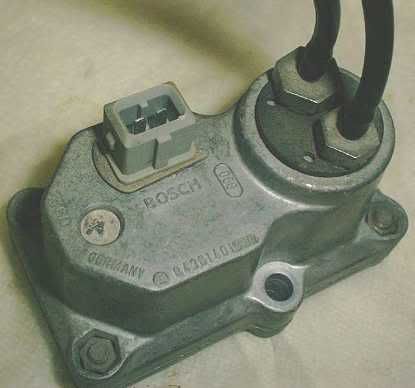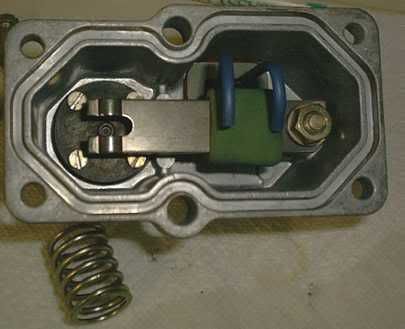Warm up regulator (WUR) Calibration / Control pressure calibration or adjustment
How to calibrate the k-jetronic warm up regulator
Applies to: Most K-jetronic mercedes engines, the type without electronic lambda controls.
Why do we have to trash malfunctioning WURs? Why do we have to pay $300 or more for a mint unit, or buy one on ebay for $99 without knowing if it's OK?
Now here is the information on how to test and calibrate any warm up regulator!
70% of this info comes to you thanks to this PDF:
http://www.denalidrafting.com/porsche/wurfix.pdf
It would be a good idea to first read this pdf and then continue; what i'm going to do is clear any doubts that the PDF may leave, and give a more thorough way of testing and calibrating the WUR.
You will need a control pressure/system pressure gauge for the k-jetronic system, with a gauge from 0 to 6bar.
The fuel mixture is determined by the position of the air flow sensor plate. The air suction creates a downward force on the sensor plate, which moves the central pin inside the fuel distributor; this force is countered by the force that applies over this pin due to the control pressure.
So if this control pressure increases, the counter acting force for the air flow sensor is greater, then the mixture is smaller.
So what is the normal control pressure? It should be around 3.0 to 4.0 bar (more on the exact numbers later).
So the Warm Up Regulator is the element which sets the control pressure, and, when the engine is cold, lowers it, so the mixture is richer.
The warm up regulator takes as input the fuel output line on top of the fuel distributor, which, by itself is system pressure (5.0-5.6bar), and lets some of this pressure drain to the fuel return line, so the pressure is reduced. Then this pressure is called the "control pressure" (3.0-4.0 bar).
WUR -- Note: This one lacks the vacuum connector on top.
![Image]()
Lets identify some parts in this image.
- At the left of the "BOSCH" label there is a pin, let's call it "THE PIN."
- Above the pin there is an electrical connector, "THE CONNECTOR." Notice it's being held in place by a C clip; you will remove it later.
- On top there are two fuel lines. The top one is the input (from fuel distributor), the bottom one is the drain/output (fuel return). Those two lines are part of a black circle thing, which is "THE DISC", which in the PDF is called as "the regulator".
Now on this image from the top half of the WUR, from the inside:
![Image]()
- At the left you see the bottom of "THE DISC".
- At the center of the disc there is "THE P SPOT", which presses the DIAPHRAGM inside THE DISC.
- The horizontal metal thing is the bimmetalic strip, "THE STRIP".
- The green thing is the electric heater for the strip, "THE HEATER", which is connected to "THE CONNECTOR"
- On the right side we see again the other side of "THE PIN"; screwed onto the pin is the nut and some washers below.
Not pictured here (sorry, i don't have more pictures right now)
- "THE SPRINGS", the base of the WUR body, the slim METAL POST that goes into the pin on the of bottom THE DISC, and the vacuum connections.
Now come on, dissasemble the WUR, it's very easy and it's unlikely that you will break anything if you don't force anything. A tip: To remove the STRIP, first remove the C clip that holds the CONNECTOR in place.
Theory of operation
The control pressure is directly regulated by the pressure exerted on THE P SPOT. Pressing THE P SPOT will increase the control pressure, no pressure on the P SPOT will drop the control pressure to 0.5 bar.
So, what the engine wants is a control pressure 3.0 to 4.0 bar when the engine is running, and, if the engine is cold, lower control pressure (say, 2.5bar), so the mixture is richer. Moreover, when accelerating, there are vacuum ports in the WUR that can affect the control pressure too, for more details on the vacuum side of the WUR please read:
http://www.benzworld.org/forums/w12...diagram-1982-500sec-500-sec-here.html?highlight=vacuum+diagram+for+500+sec+here
Now, look at your Warm Up Regulator. It has a bosch code, for example 0 438 140 068. The end number (068 in this case) is the number that gives us the intended calibration of the WUR. Now here are the calibration specs for each warm up regulator, straight from mercedes benz:
Specifications for some WUR used in the M116/117 and M110 engines.
How to calibrate the k-jetronic warm up regulator
Applies to: Most K-jetronic mercedes engines, the type without electronic lambda controls.
Why do we have to trash malfunctioning WURs? Why do we have to pay $300 or more for a mint unit, or buy one on ebay for $99 without knowing if it's OK?
Now here is the information on how to test and calibrate any warm up regulator!
70% of this info comes to you thanks to this PDF:
http://www.denalidrafting.com/porsche/wurfix.pdf
It would be a good idea to first read this pdf and then continue; what i'm going to do is clear any doubts that the PDF may leave, and give a more thorough way of testing and calibrating the WUR.
You will need a control pressure/system pressure gauge for the k-jetronic system, with a gauge from 0 to 6bar.
The fuel mixture is determined by the position of the air flow sensor plate. The air suction creates a downward force on the sensor plate, which moves the central pin inside the fuel distributor; this force is countered by the force that applies over this pin due to the control pressure.
So if this control pressure increases, the counter acting force for the air flow sensor is greater, then the mixture is smaller.
So what is the normal control pressure? It should be around 3.0 to 4.0 bar (more on the exact numbers later).
So the Warm Up Regulator is the element which sets the control pressure, and, when the engine is cold, lowers it, so the mixture is richer.
The warm up regulator takes as input the fuel output line on top of the fuel distributor, which, by itself is system pressure (5.0-5.6bar), and lets some of this pressure drain to the fuel return line, so the pressure is reduced. Then this pressure is called the "control pressure" (3.0-4.0 bar).
WUR -- Note: This one lacks the vacuum connector on top.

Lets identify some parts in this image.
- At the left of the "BOSCH" label there is a pin, let's call it "THE PIN."
- Above the pin there is an electrical connector, "THE CONNECTOR." Notice it's being held in place by a C clip; you will remove it later.
- On top there are two fuel lines. The top one is the input (from fuel distributor), the bottom one is the drain/output (fuel return). Those two lines are part of a black circle thing, which is "THE DISC", which in the PDF is called as "the regulator".
Now on this image from the top half of the WUR, from the inside:

- At the left you see the bottom of "THE DISC".
- At the center of the disc there is "THE P SPOT", which presses the DIAPHRAGM inside THE DISC.
- The horizontal metal thing is the bimmetalic strip, "THE STRIP".
- The green thing is the electric heater for the strip, "THE HEATER", which is connected to "THE CONNECTOR"
- On the right side we see again the other side of "THE PIN"; screwed onto the pin is the nut and some washers below.
Not pictured here (sorry, i don't have more pictures right now)
- "THE SPRINGS", the base of the WUR body, the slim METAL POST that goes into the pin on the of bottom THE DISC, and the vacuum connections.
Now come on, dissasemble the WUR, it's very easy and it's unlikely that you will break anything if you don't force anything. A tip: To remove the STRIP, first remove the C clip that holds the CONNECTOR in place.
Theory of operation
The control pressure is directly regulated by the pressure exerted on THE P SPOT. Pressing THE P SPOT will increase the control pressure, no pressure on the P SPOT will drop the control pressure to 0.5 bar.
So, what the engine wants is a control pressure 3.0 to 4.0 bar when the engine is running, and, if the engine is cold, lower control pressure (say, 2.5bar), so the mixture is richer. Moreover, when accelerating, there are vacuum ports in the WUR that can affect the control pressure too, for more details on the vacuum side of the WUR please read:
http://www.benzworld.org/forums/w12...diagram-1982-500sec-500-sec-here.html?highlight=vacuum+diagram+for+500+sec+here
Now, look at your Warm Up Regulator. It has a bosch code, for example 0 438 140 068. The end number (068 in this case) is the number that gives us the intended calibration of the WUR. Now here are the calibration specs for each warm up regulator, straight from mercedes benz:
Specifications for some WUR used in the M116/117 and M110 engines.
Code:
WUR end code / control pressure at 20C(68F) / control pressure with engine at operating temperature (84C) / stabilization time / notes
061 / 1.6-2.0 bar / 3.4-3.8? / 3-6 min?
068 / 1.8-2.2 bar / 3.4-3.8? / 3-6 min?
030 / 1.2-1.6 bar / 3.4-3.8 / 3-6 min
031 / 1.2-1.6 bar / 3.0-3.4 / 3-6 min / "USA California version"
041 / 1.4-1.8 bar / 3.6-4.0 / 3-6 min / "USA Federal high altitudes"
056 / 1.2-1.6 bar / 3.4-3.8 / 2-4 min / In my car, which is a french euro 500 SEC.





